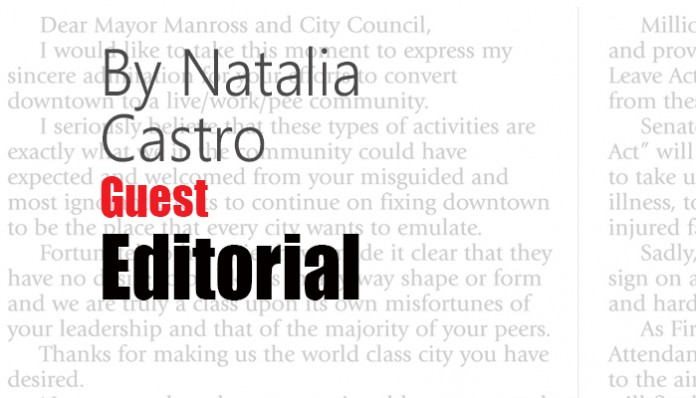For over 200 years, earmarks were a staple in appropriations legislation, but last decade that system changed dramatically as abuses of power became more and more evident, and by 2011 the system was banned. President Donald Trump recently chimed in on this controversial debate calling for a change in Congressional rules, like earmarks, to more efficiently move legislation. To understand if earmarks can exist appropriately in the Trump era, we must know what they are, why they were banned and why they have ignited debate.
It is important to note that earmarks have always been around. Essentially, the earmarking process allows Congress to “earmark” discretionary funds in the appropriations process to be spent on specific projects. Often in controversial legislation, earmarks provided congressional members an incentive to pass a bill while the full policy may not be supported by constituents, the earmark could mean a local road or bridge being constructed with the funds, satisfying the people back home.
Earmarking does not add money to the appropriations process; it merely uses already allocated funds to prioritize projects for a specific location.
For most of history, earmarks were used to fund small transportation and infrastructure projects in districts. This was until a 2007 Department of Transportation (DOT) Inspector General report found that between 1996 and 2005, DOT earmarks increased in number by 1150 percent. Another report showed that during the 2009 to 2011 Congress, members requested nearly 40,000 earmarks worth $131 billion.
With earmarking becoming an increasingly widely used process for directing funds, scandalous abuse also followed. For example, California Congressman Duke Cunningham pled guilty to over $2.3 million in bribes in 2005. Cunningham used earmarks to allocate over $80 million of Pentagon contracts to a company owned by Brent Wilkes, who was paying Cunningham in cash for providing his company with business. Cunningham also received a Rolls-Royce, a yacht, and a 19th century Louis-Philippe commode in exchange for his earmarks.
Perhaps the most infamous case of abuse was the $223 million earmark for the “Bridge to Nowhere” to connect an 8,000-person Alaskan town to an airport. This incident became the symbol of Washington waste, and earmarks were seen as the driver of the problem.
Under Democratic control earmarks became heavily regulated, requiring a public record of all earmarks supported by each Congressman and signed letters indicating the Congressman received no financial retribution for the earmarks inclusion. But when Republicans took control of Congress during the Tea Party wave, conservatives launched a full fight against earmarks as government waste and corrupt swamp politics, causing a complete ban on the system in 2011.
Seven years later earmarks are back in the spotlight. With partisan gridlock making Congress unable to move legislation, President Trump suggested earmarks could be the answer.
During a bipartisan meeting on immigration reform, President Trump told lawmakers, “our system lends itself to not getting things done, and I hear so much about earmarks — the old earmark system — but there was a great friendliness when you had earmarks. Maybe all of you should start thinking about going back to a form of earmarks.”
Trump’s words have produced both positive and negative feedback from both sides of the aisle.
John Hudak of the Brookings Institution argues, despite the ban on earmarks, the process never truly disappeared, but instead, the power to prioritize projects moved to agencies and became less transparent. Hudak continues to explain that the “pork” from earmarks made supporting controversial bills more acceptable and provided negotiating power to members of Congress — creating more comprehensive legislation that moved through Congress quicker and in a more bipartisan fashion.
Former Mississippi Senator Trent Lott partnered with former Democratic chief deputy whip John Breaux to write in the Washington Post on Jan. 25, 2018 in favor of earmarks. They note, “Yes, it is a bad idea to give members of Congress bundles of money to spend on unrelated projects in their districts with no check or balance. But that does not need to be the case… With the right framework, earmarks can place [Article 1] authority back in the hands of elected representatives and promote a more functional Congress with a sense of accountability.”
However, skeptics still exist.
Clearly, earmarks can breed corruption and unnecessary spending, which is why conservatives fought hard for their ban.
Some feel this also gravely distorts the process which should take place for prioritizing funding opportunities. Without earmarks, executive departments use algorithms to allocate funding for necessary projects. While earmarks do not add money to the appropriations process, they do move money away from projects that logistically might be in more need of the funds.
If Trump’s dream of earmarks return is ever to materialize, it is clear reforms would be necessary to prevent the corruption of the process, but it has been done before and for over 200 years. Earmarks could be the solution to stagnant Congressional gridlock, but if not done correctly, they could also bring many more problems.
Natalia Castro is a contributing editor at Americans for Limited Government





